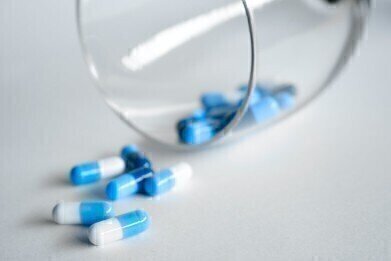GC, MDGC
Improved Water Content Analysis in Pharmaceuticals with HSGC
Feb 14 2015
Drugs are one of the most regulated chemicals produced by a manufacturing process. The correct chemical has to be delivered at the correct dose and rate — time after time. If the drug cannot do this the patient might not receive the treatment they need — this could delay recovery or even be life-threatening.
Moisture Content in Drugs
One of the critical elements manufacturers have to measure is the moisture content of the drug and its precursors. It is not only in the final product that moisture has to be correct, the wrong moisture content of the raw materials of intermediates can have a significant effect on production.
When a drug is being manufactured, the process will aim to achieve a moisture content within the product or process specification. The specification chosen will be the best moisture content allowing efficient production for the drugs combination of active components and excipients to produce a safe and stable product. Once the specification has been fixed for a particular drug and dose, the manufacturer will have to meet the specification due to regulatory compliance.
If the moisture content is out-of-specification during production or in the finished product, the effect can be apparent in several ways including:
- too much moisture during manufacture can affect the flow properties of powders,
- moisture content of powders impacts the force needed to press a powder into a tablet, or
- excess moisture could react with a component making a drug inert or reducing the drug’s shelf-life.
It is imperative that manufacturer’s get the moisture content correct at all stages of manufacture. How do they measure moisture content?
Measuring Moisture Content
There are many methods for measuring the moisture content of a pharmaceutical and the method used will depend on the physical and chemical characteristics of the sample.
Karl Fischer Titration and Loss–on-Drying are the two most widely used methods in pharma — but both techniques have their limitations. Enter a new technique.
GC — a new alternative?
A recently published paper in the Journal of Pharmaceutical and Biomedical Analysis has suggested a method using headspace gas chromatography could be a better alternative to the traditional methods of analysis. In a paper titled Water determination in active pharmaceutical ingredients using ionic liquid headspace gas chromatography and two different detection protocols the researchers suggest that the new method works on a wide variety of drugs and is much more sensitive than the current methods.
One of the paper’s authors, Daniel Armstrong stated in a press release that: ‘Current methods have many shortcomings, including poor sensitivity and reproducibility; they cannot be used for all products and they can be time consuming. I believe our new ‘ionic liquid’ method offers improvements in all these areas.’
Headspace GC is a powerful chromatography technique used to measure volatile analytes. The team combined HSGC with an ionic liquid based capillary column to increase the sensitivity of the method.
For more information on HSGC take a look at this new story: Making Roads a Safer Place with Headspace GC Analysis.
Digital Edition
Chromatography Today - Buyers' Guide 2022
October 2023
In This Edition Modern & Practical Applications - Accelerating ADC Development with Mass Spectrometry - Implementing High-Resolution Ion Mobility into Peptide Mapping Workflows Chromatogr...
View all digital editions
Events
Apr 23 2024 Kintex, South Korea
Apr 23 2024 Seoul, South Korea
Apr 28 2024 Montreal, Quebec, Canada
May 05 2024 Seville, Spain
May 15 2024 Birmingham, UK














